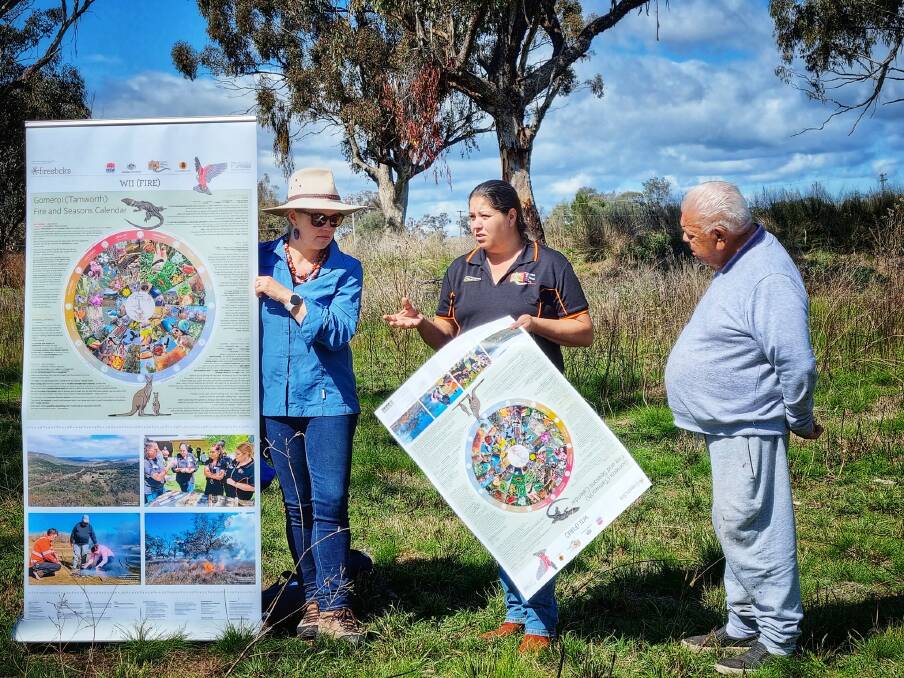
Cultural burn experts have pulled together their knowledge to create a fire calendar which will lay the foundation for future cultural burns.
Subscribe now for unlimited access.
or signup to continue reading
According to Cultural Burn Program manager Kaliela Thornton the calendars are a comprehensive directory of telltale signs people can look for.
She said they needed a very specialised calendar as the seasons of the region are "quite unique".
"What the fire calendar shows is that Gomeroi country has a lot of different seasonal changes. Where some places have four seasonal changes, we've got several," she said.
"There's good indicators when telling about the different changes of the wind, or which tree might be losing its bark at that time.
"It's got all those connections to country, so it's got all that linked knowledge and you've just got to know how to read the landscape."
The calendar also tells of the kinds of burns that can be done when the land is showing certain signs.
Ms Thornton said the right kind of burn can have a very beneficial impact on the land.
"We did a thing called a reset burn, which was to clear lots and lots of weeds," she said.
"And then there'll need to be follow-up burns, so that we can go in and access the seed bank that's probably been laying dormant for 100 years."
According to Gomeroi Cultural Burn Network coordinator Joanne Stead, they've developed three calendars across different parts of the region to account for the changing landscape.
The areas around Tamworth, Gunnedah, and Walhallow each have their own calendars.
"We're all geographically quite close, but they [the calendars] all have different information on them because of what the Indigenous people in those areas have noticed," she said.
READ ALSO
By bringing all this Indigenous knowledge together, Ms Stead said it's also helped to rediscover Indigenous knowledge that has gone missing over the years.
"This is something that's been lost culturally because of the displacement of Aboriginal people and all sorts of past government practices," she said.
"There are sparks and memories of that knowledge being practiced in our area."
Another of those looking to forge a path to cultural burns is local ecologist Michelle McKemmey.
As a cross cultural ecologist combining both Indigenous and western knowledge, Ms McKemmey said the fire calendar reflects the teamwork that's needed to make progress.
"The calendar is all about sharing and promoting Indigenous knowledge, but also using some western science knowledge," she said.
"Like data from the Bureau of Meteorology, climate data and biodiversity records from government departments, and national parks plans of management."
However, Mrs McKemmey said there's still plenty of work to be done before the knowledge can really be put into practice.
She said one of the big steps is scaling up collaboration and knowledge sharing in the Indigenous communities of the region.
"I think those mentoring and networking events within the Aboriginal community are really important for them to share that knowledge," she said.
"There's already been fantastic results from that happening, but I think there's more potential for that happening."
Our journalists work hard to provide local, up-to-date news to the community. This is how you can continue to access our trusted content:
- Bookmark northerndailyleader.com.au
- Make sure you are signed up for our breaking and regular headlines newsletters
- Follow us on Twitter
- Follow us on Instagram
- Follow us on Google News


